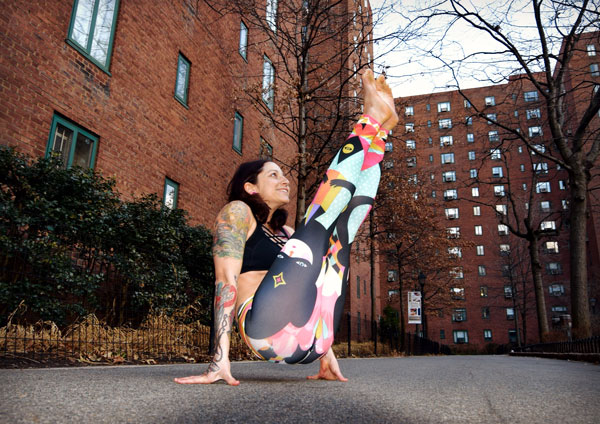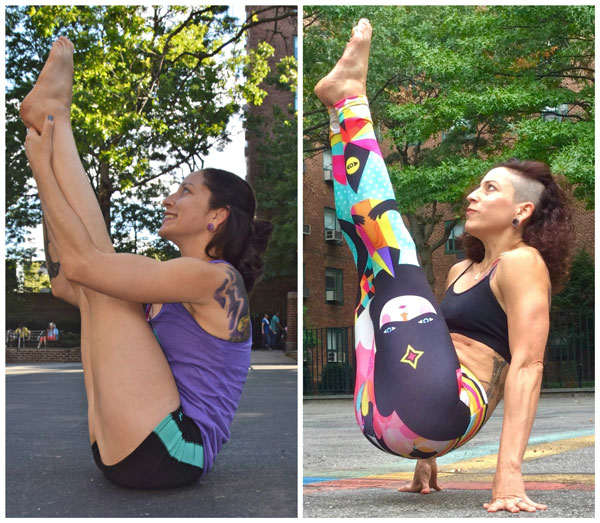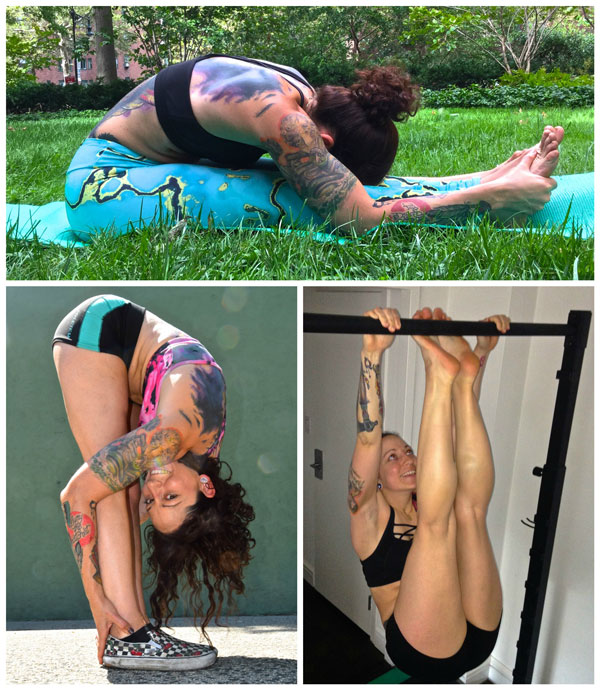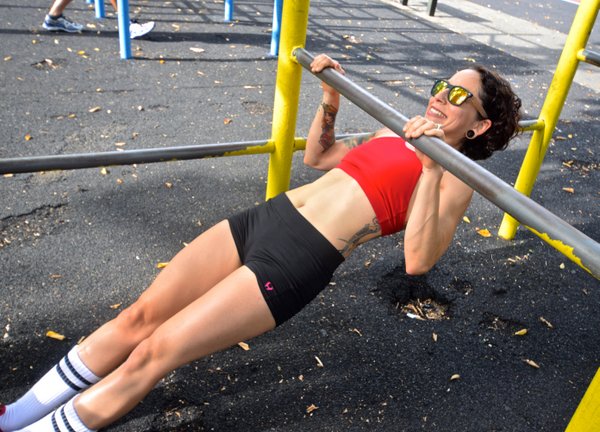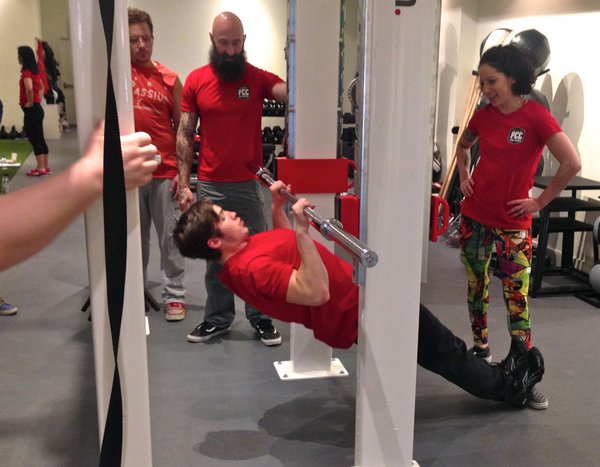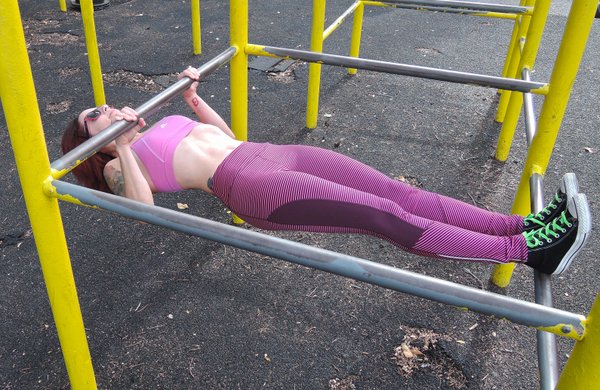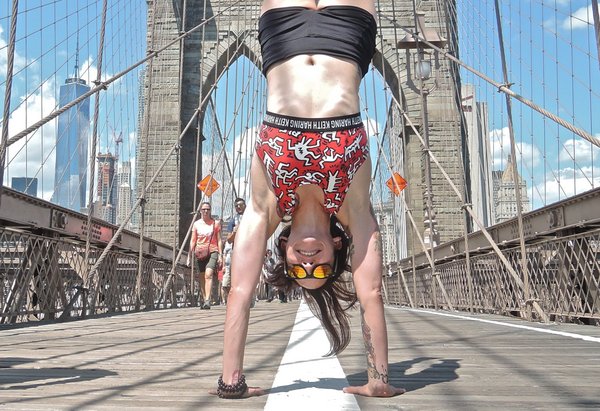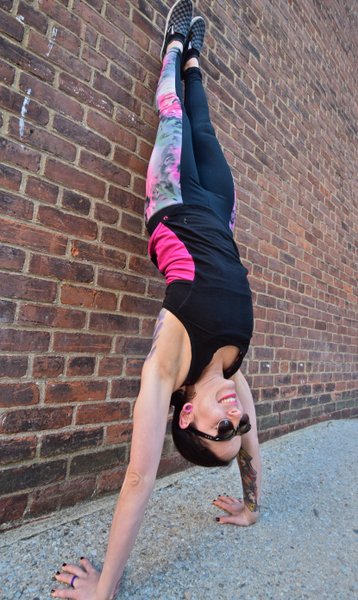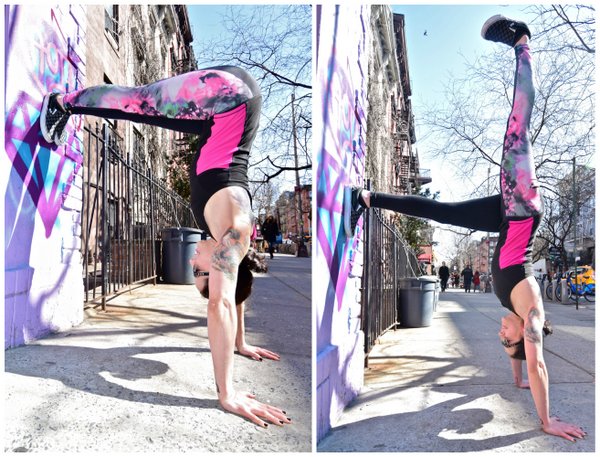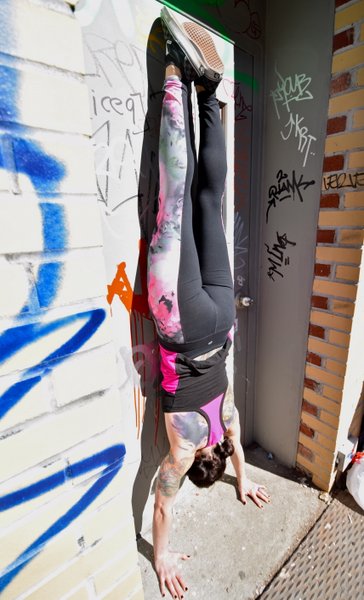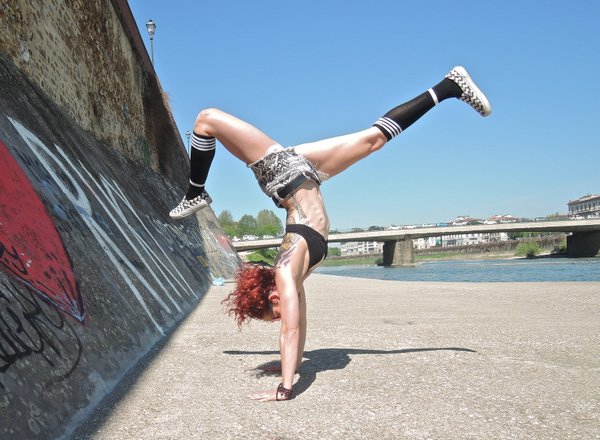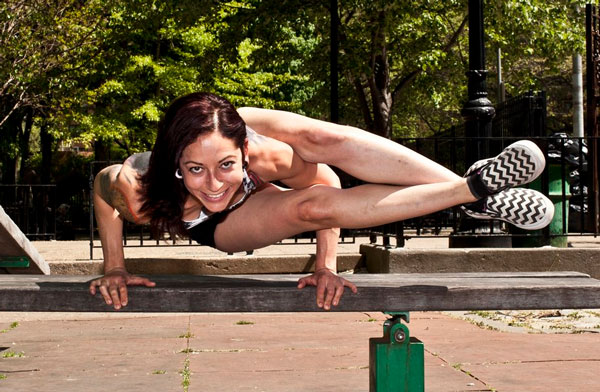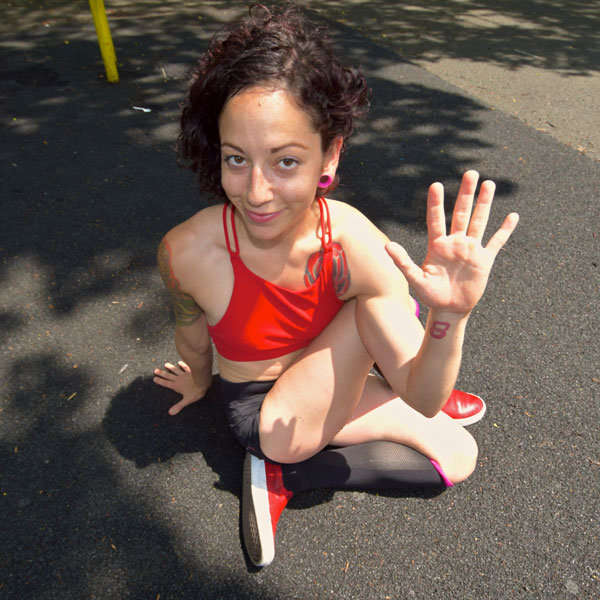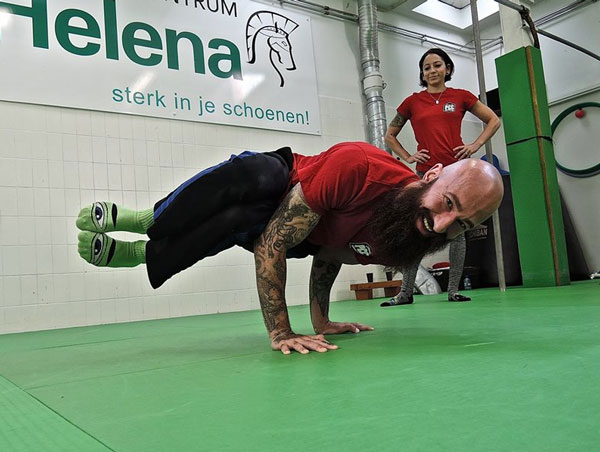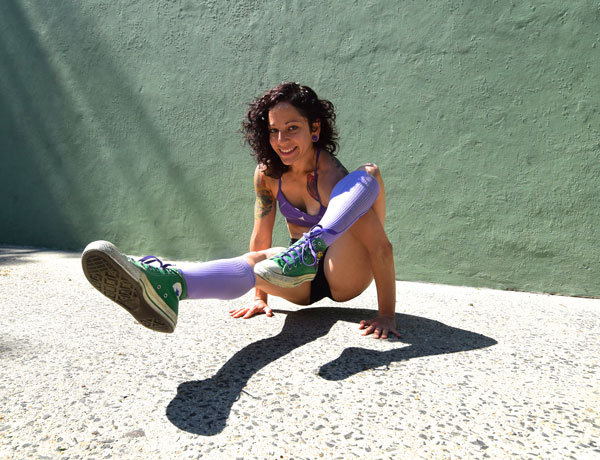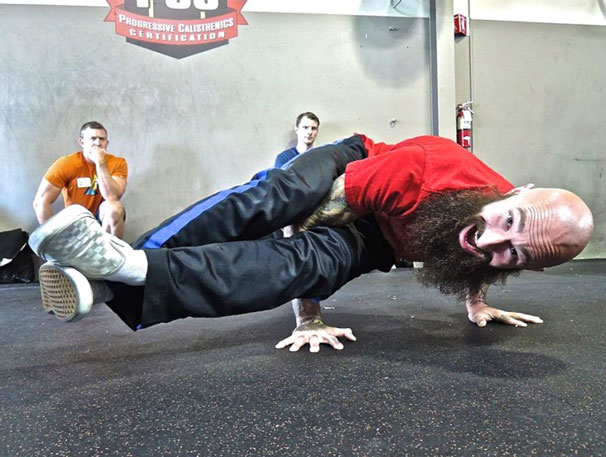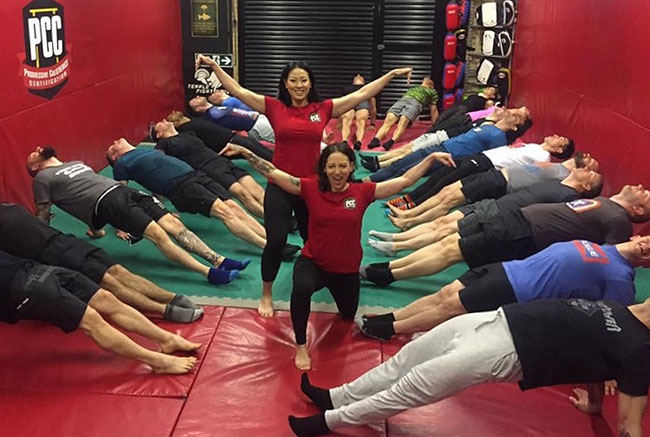
I’d heard big things about the Commando Temple gym in London from Al and Danny after the previous Progressive Calisthenics Certification there, so I had high expectations going into last weekend’s event.
This would be the third time the PCC was happening in Great Britain, but it was my first time visiting the legendary Commando Temple. Despite the hype, it was even better than I expected!
The Temple is nothing like your typical gym, which tends to be bloated with treadmills, stationary bikes, and machines. It is truly a playground for DIESEL people! There is tons of floor space, pull-up bars of every width, a Swedish ladder, full-sized parallel bars and even customizable human flag handles.
I was immediately impressed and knew it was going to be an event of epic proportions. Still, nothing could prepare me for the energy and excitement that took place throughout the weekend.
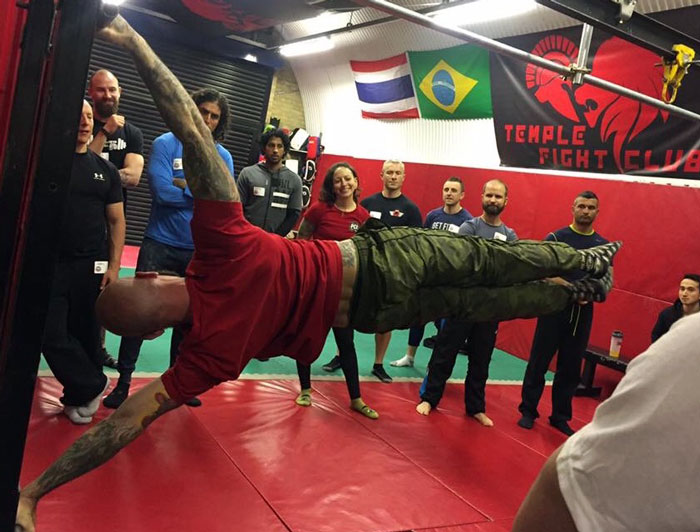
As a self-professed geek, I was thrilled to see that the walls are covered in comic book and superhero art. Everywhere you look there’s a figurine or picture with inspirational action icons!
The superheros pictured on the walls weren’t the only superheros in the room. Just like the unassuming Clark Kent turns into Superman at the blink of an eye, these polite British chaps turned into full-blown calisthenics beasts once they were unleashed on the bars!
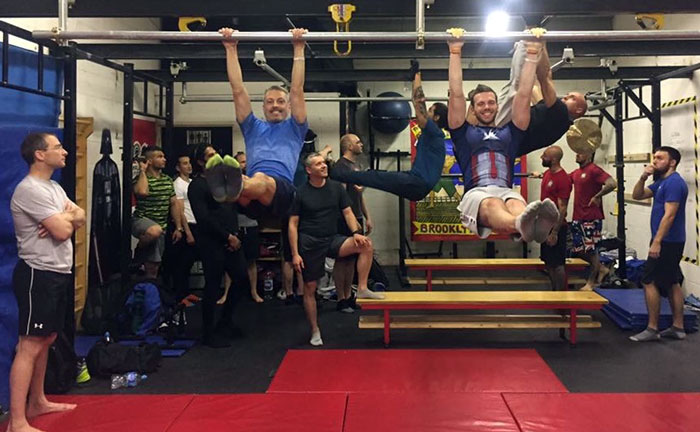
The guys weren’t the only ones getting in on the action, either. There were some Wonder Women in this group as well. I love connecting with other ladies who share my passion for calisthenics. As a female, it’s empowering to be on the forefront of a movement that is typically dominated by men. However, at every PCC we are spreading the word that pull-ups and push-ups aren’t just for the boys. The ladies of PCC never fail to impress me with their strength and solidarity.

As always, the PCC brings people together from all over the world. Though there were many local Londonites in the house, attendees came from places as far and varied as Senegal, South Africa, Italy, Greece, Belgium and Ireland. We were all united by our passion for calisthenics and our desire to improve. And improve we did! There were more PR’s set than I can ever recall seeing at a PCC workshop. Pistols were firing, flags were flying and handstands were happening everywhere.
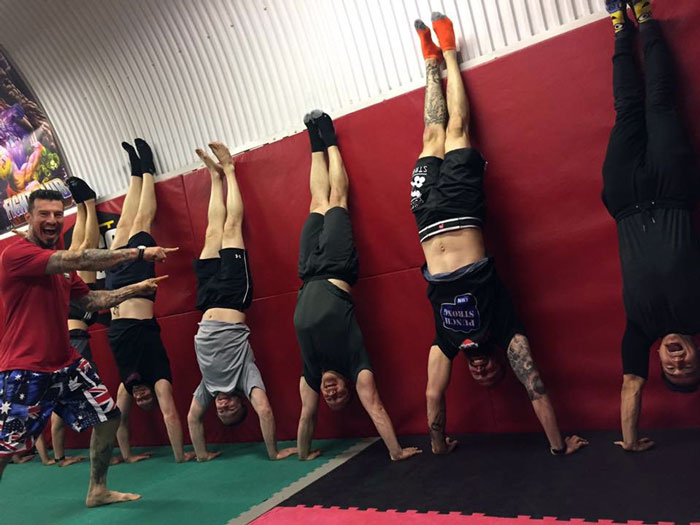
The whole weekend went by in a flash! When all was said and done, we were left with new friends and a great group of newly certified progressive calisthenics trainers. It’s an honor to teach and share what I’ve learned so far in my journey, and it’s a privilege to be a part of this wonderful movement. My favorite thing about the PCC is how it brings out the best in people. We all have a superhero inside of us.
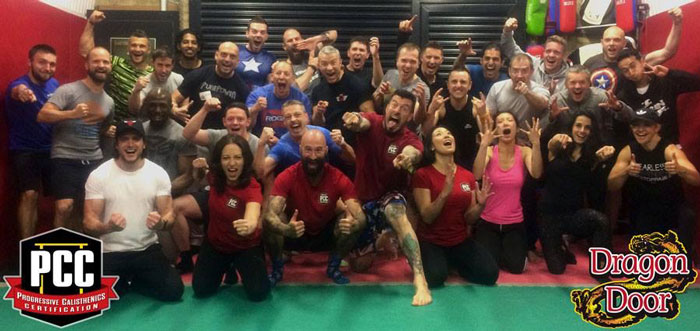
***
Grace Kavadlo is a PCC Team Leader, personal trainer and group exercise instructor located in New York City. She is a columnist for Bodybuilding.com and can be seen in several Dragon Door books, including Al Kavadlo’s Zen Mind, Strong Body and Paul “Coach” Wade’s Explosive Calisthenics. For more information about Grace, check out her website, www.DieselGrace.com.
